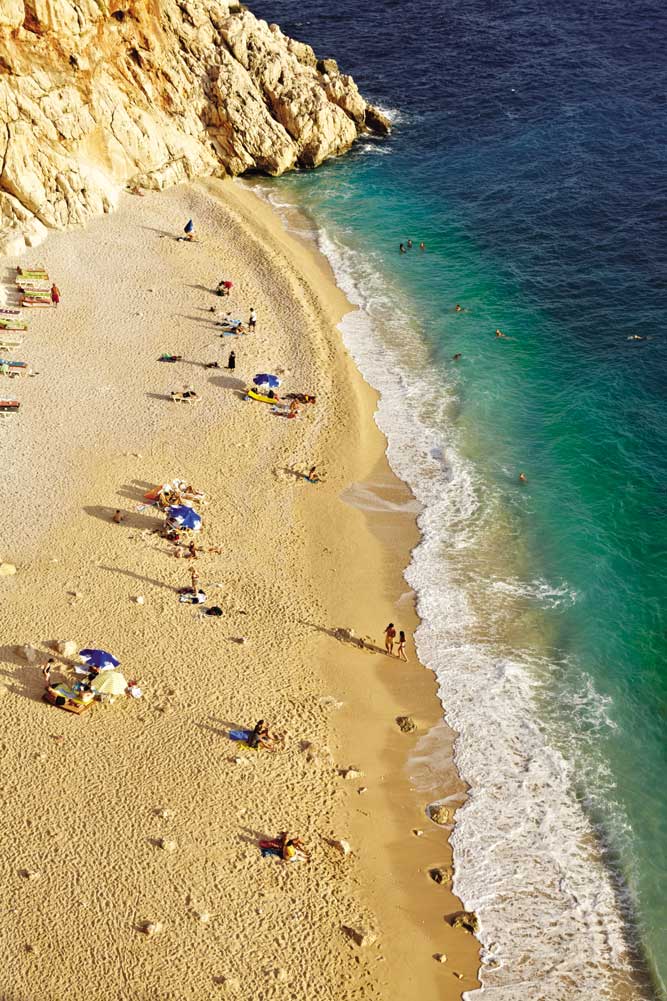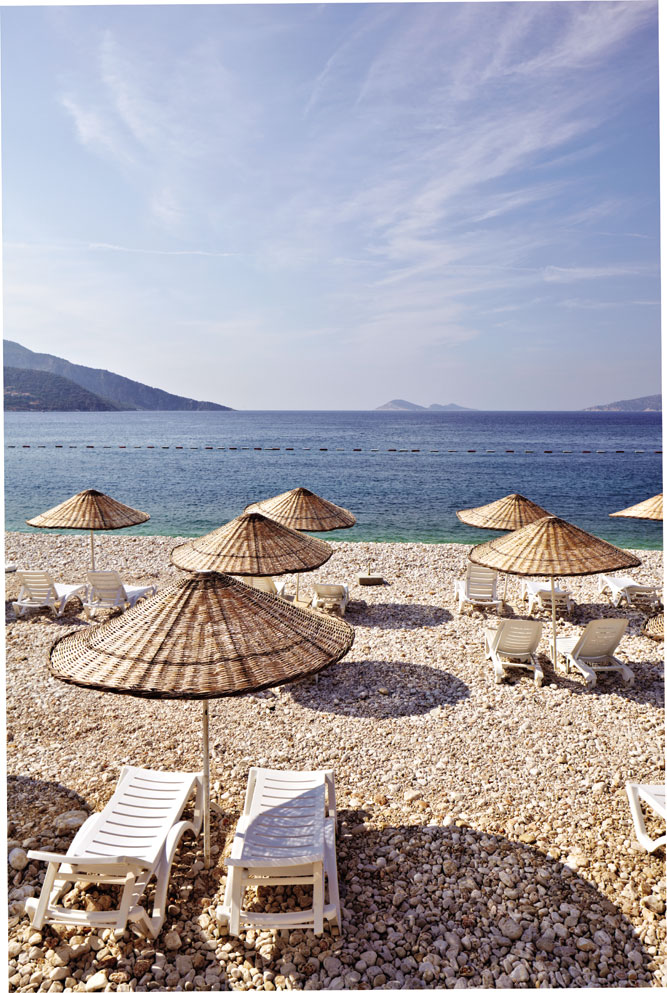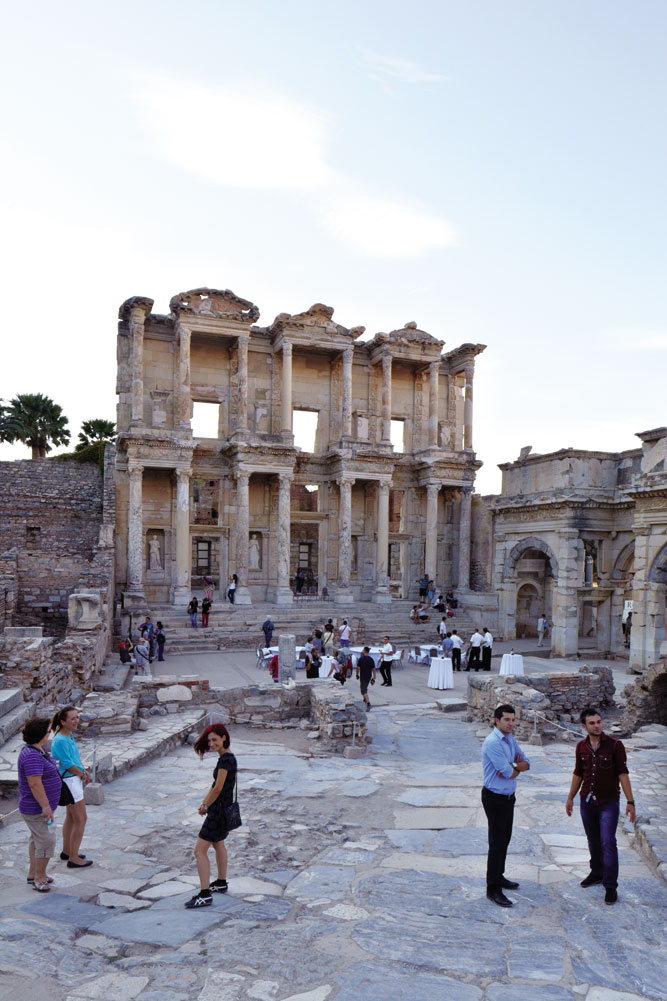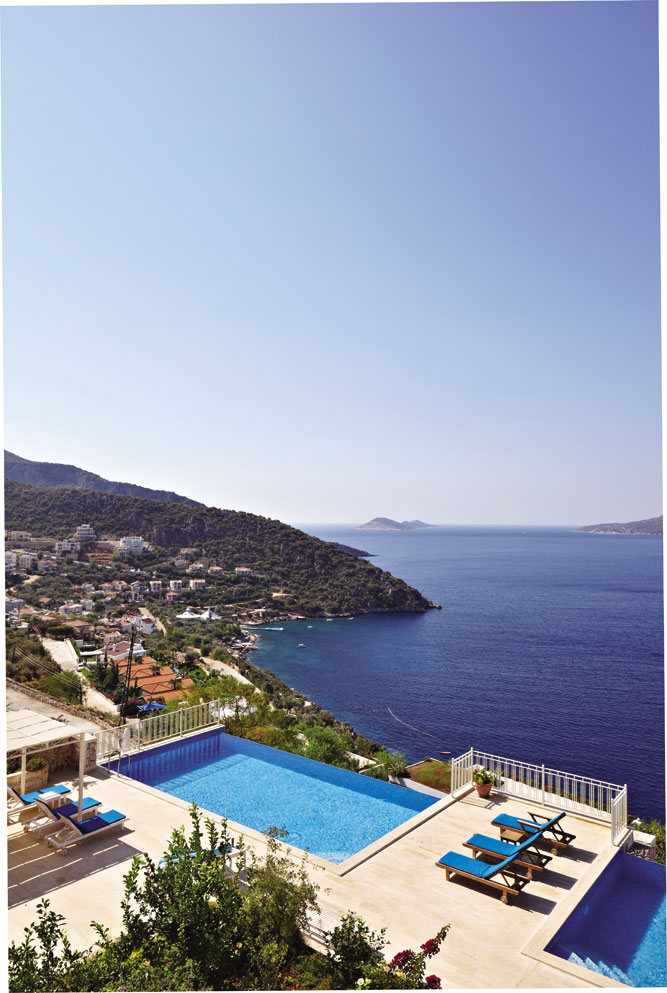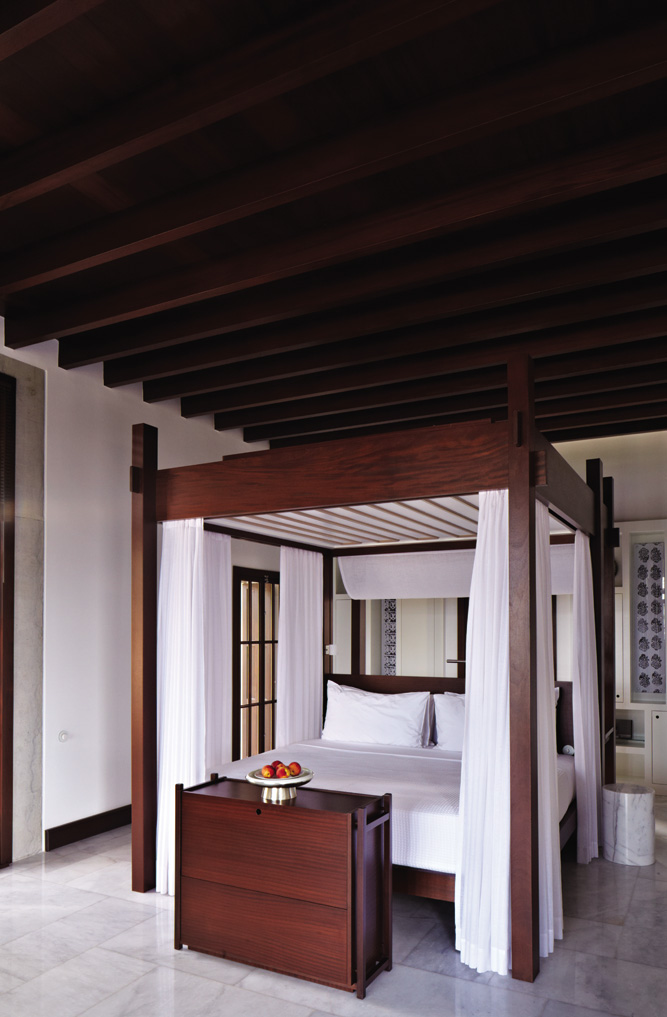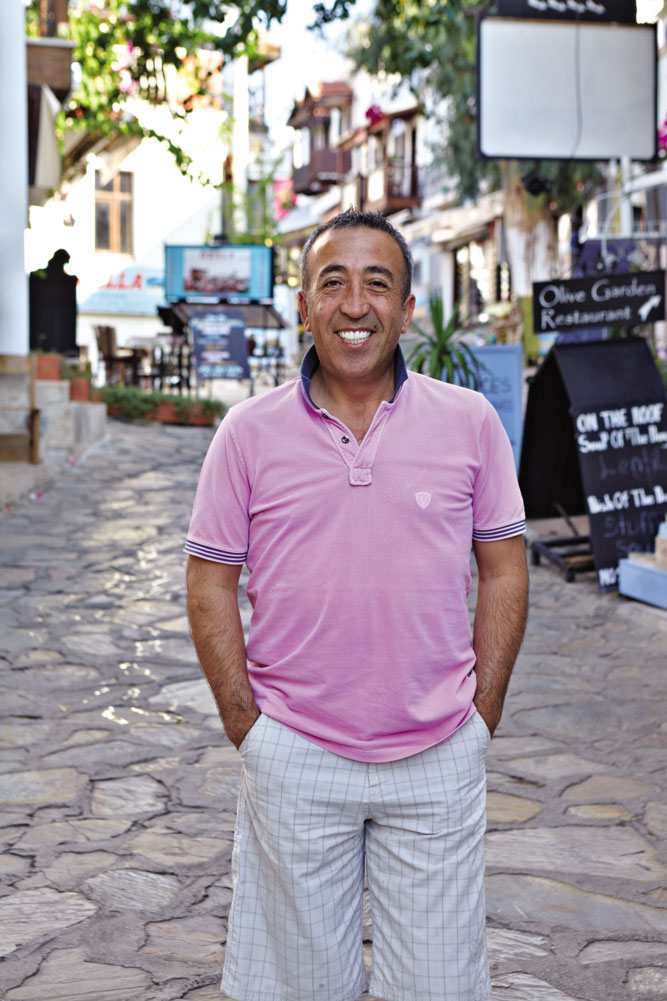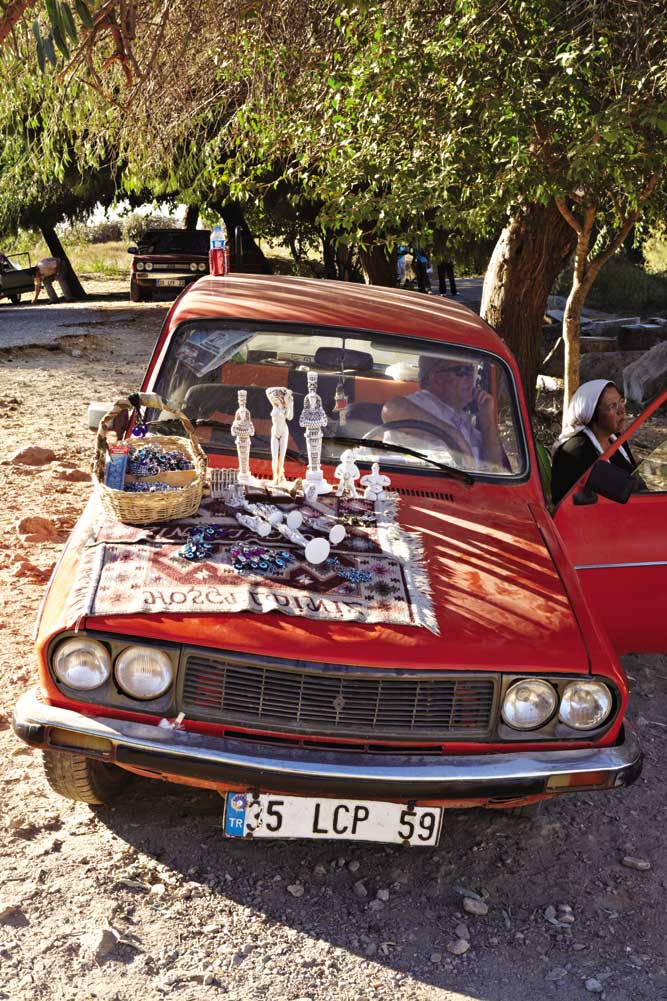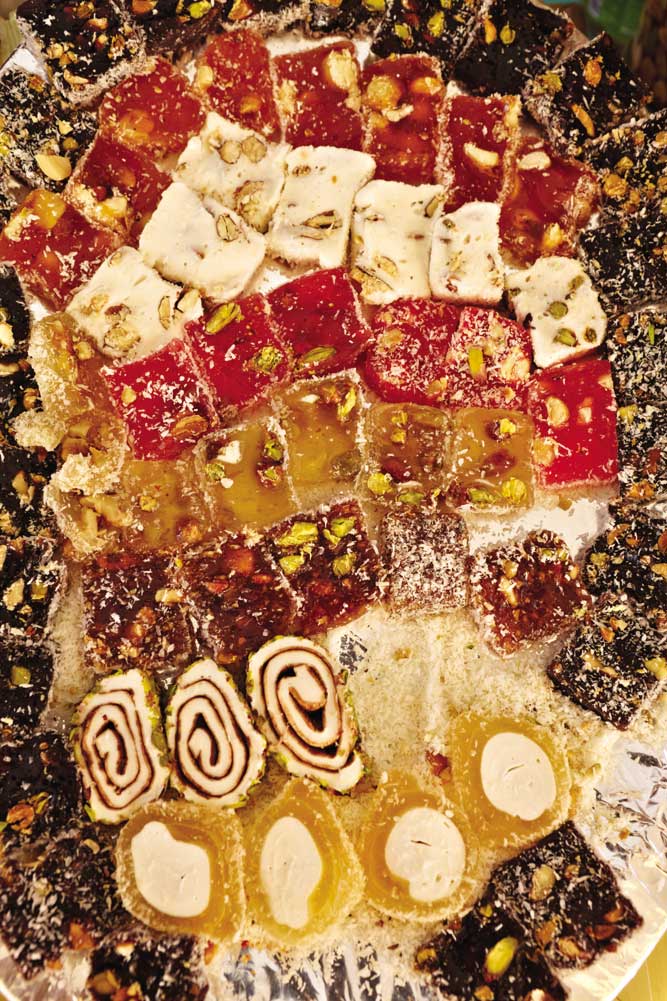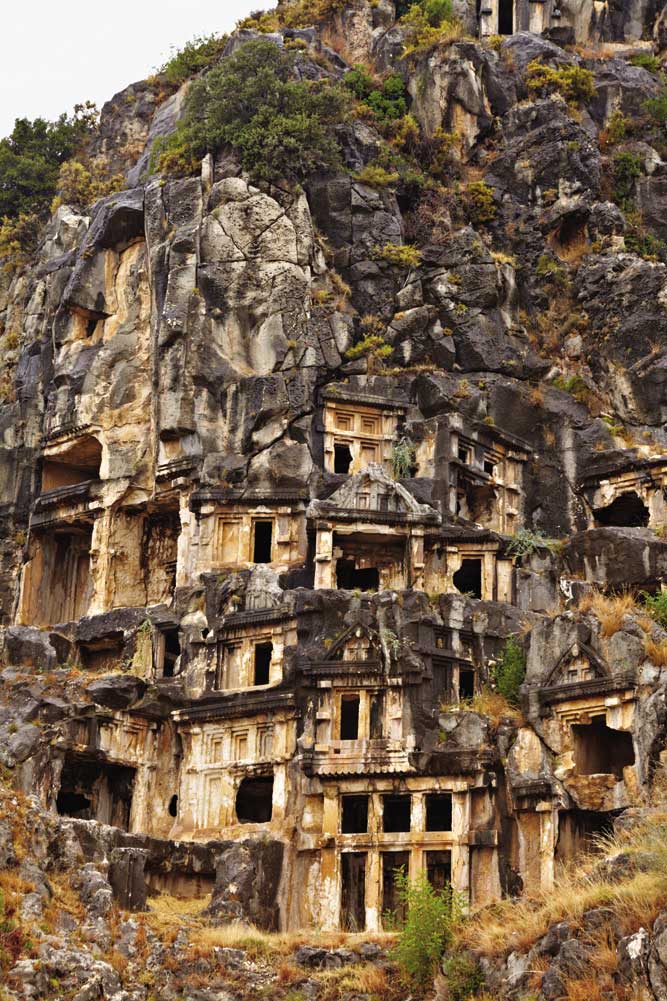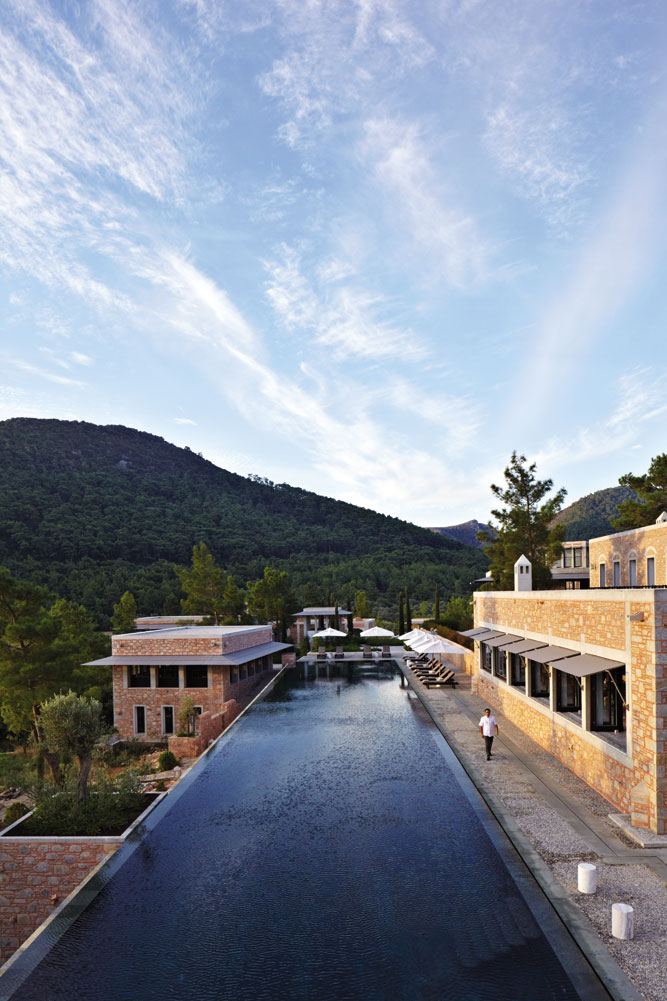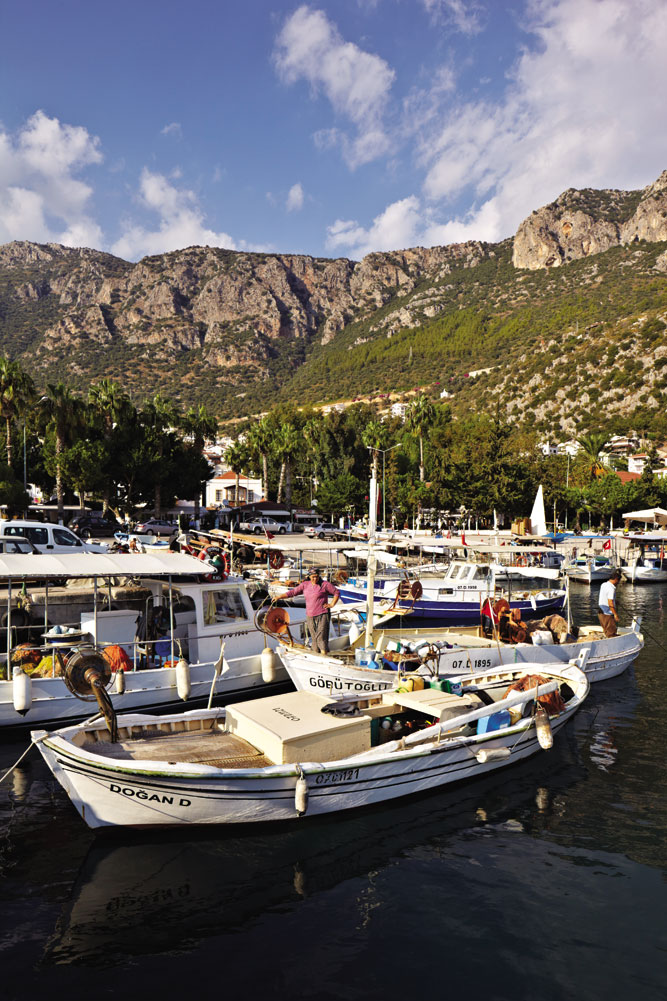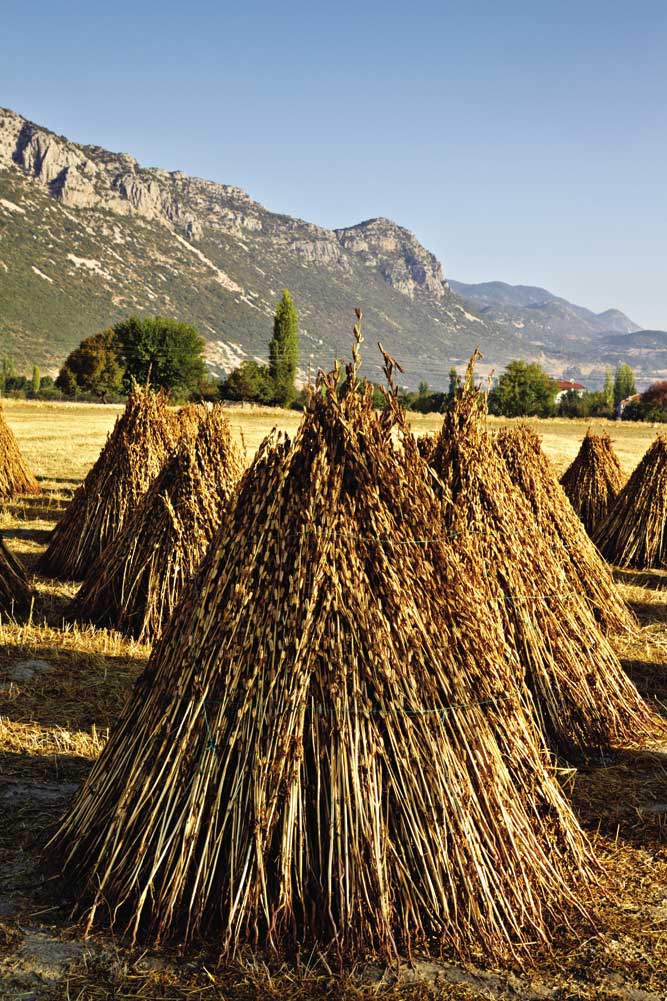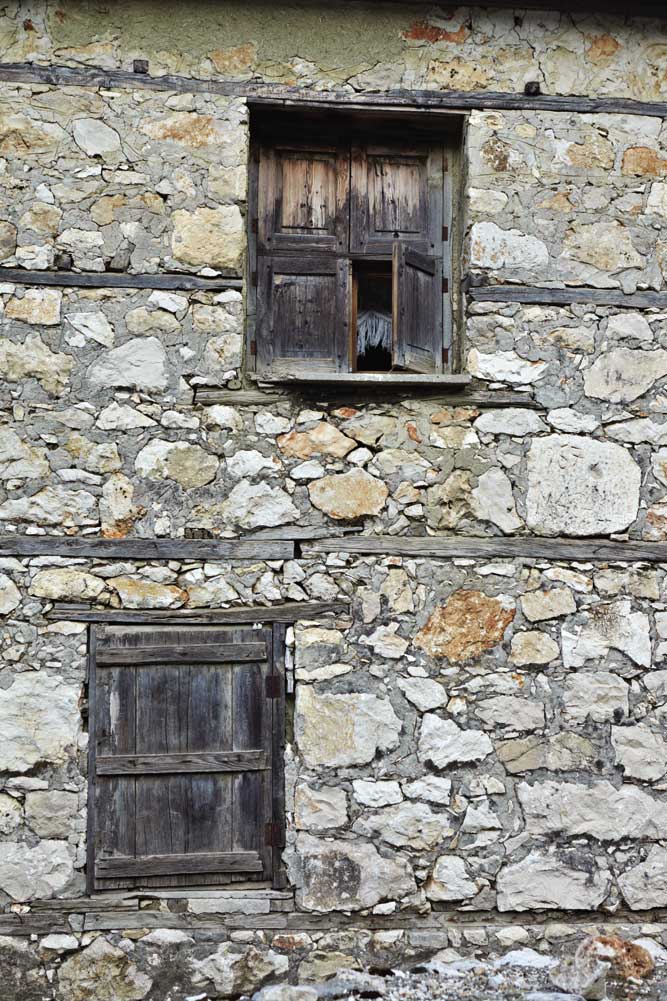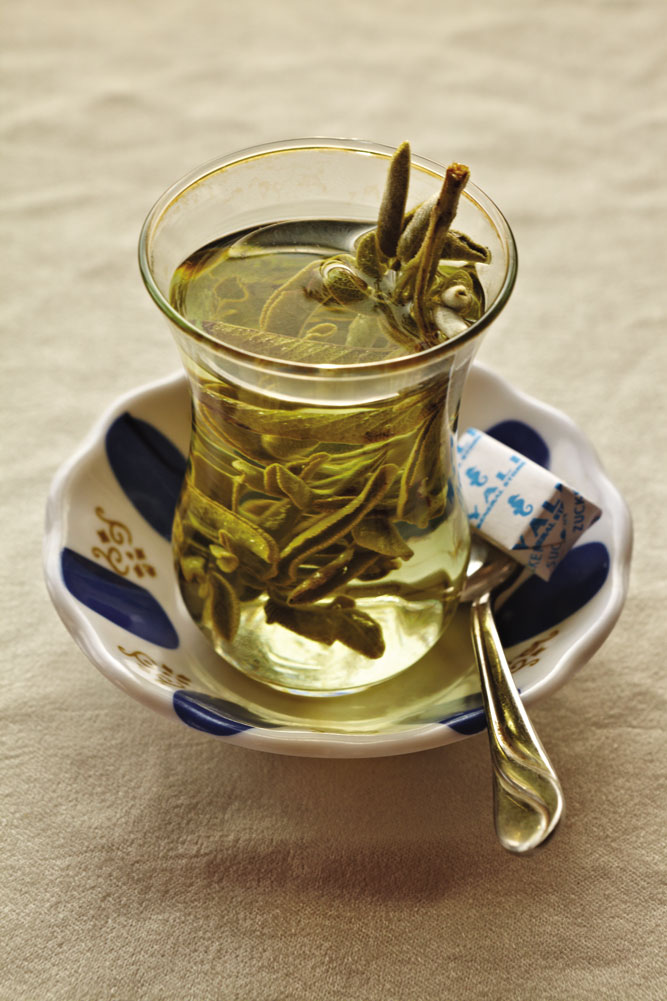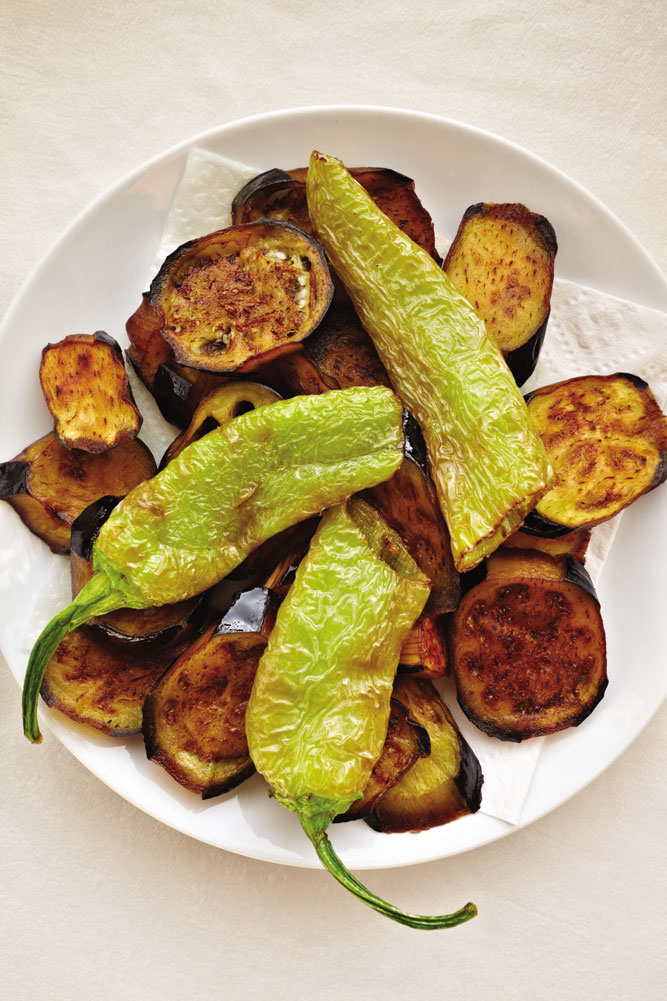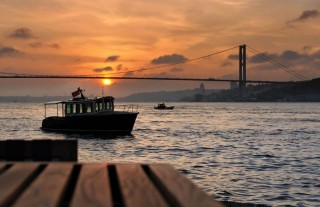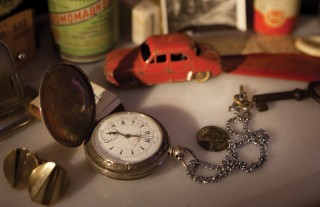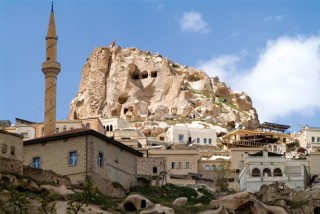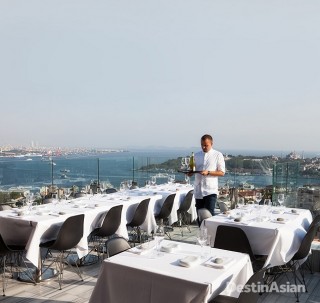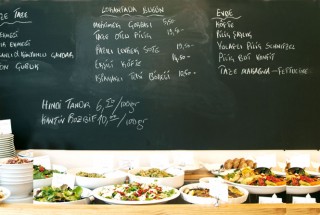Another day, we trace the scenic coastal road west to Kaş, a small but bustling port town backed by craggy limestone hills. Dive boats and two-masted gulets with names like Dragoman and Alibaba crowd the wharves. Kim makes a beeline for a cobbled shopping street called Uzun Çarşı, popping into one boutique to try on embroidered lamb’s-wool shawls, then into another to admire updated Byzantine broaches and Ottoman pendants by jeweler Hüseyin Sağtan, who, we’re told, designed the faux-period baubles worn in The Other Boleyn Girl and Troy.
Kaş is built on the foundations of the ancient Lycian port city of Habesa (later Antiphellos). Its economy, however, much like Kalkan’s, rests squarely on tourism. People come here to hike the hills, dive the offshore reefs, or make daytrips to the rocky Greek island of Kastelorizo, whose unspeakably cute harbor lies just a couple kilometers across the bay. But there are antiquities here, too, almost casually stitched into the town’s modern commercial fabric. The 2,500-year-old Lycian sarcophagus that casts its shadow over a trinket stand at the top of Uzun Çarşı. The ancient cistern in the basement of Echo bar. The Hellenistic theater just across from the kebab joint where we stop for skewers of grilled lamb and lahmacun, Turkey’s piquant answer to the pizza.
One runs the risk of becoming blasé about archeology in this part of Turkey—there’s just so much of it. “Everywhere in these mountains, treasures,” says Halit one overcast morning as the three of us drive through the hills above Kaş en route to Myra. At first, I assume he is talking about the Lycian rock-cut tombs that pock the distant cliff faces, or maybe even the Ottoman-era gümbets (domed rainwater cisterns) that occasionally flash past on the roadside. But what he means is buried treasure—caches of jewelry, gold coins, and other valuables—left behind by the Greeks who were deported during the population exchange of the early 1920s. “They buried these things thinking they would come back some day. But they never did,” he says. “At night, you can see lights where people are digging, always digging.”
Any treasure-hunters would have a cool time of it today; from yesterday’s high of 30°C in the shade, the temperature has dipped to a blustery 15°C. But that hasn’t deterred busloads of Russian tourists from mobbing what remains of ancient Myra. Served by pomegranate-juice squeezers and simit (a sort of sesame bagel) sellers, the ruins lie at the edge of a coastal plain that, from the road above, looks like it’s been Saran wrapped—plastic greenhouses stuffed with tomatoes cover every inch of ground. The sea of plastic, in fact, laps right up against a cliffside Lycian necropolis of yawning tombs carved temple-style with pediments and pillars. Right next door is a well-preserved Greco-Roman theater, the biggest on this coast. Its acoustics still impress: from the uppermost of its 35 rows of seats, I can hear Halit, down on the arena floor, laughing away as though he were standing beside me.
Myra—or rather the modern town of Demre—is also home to the Church of St. Nicholas, who was bishop here in the fourth century. Predictably, Santa gimmicks abound out front, including a jolly Bakelite statue of St. Nick and an eatery that optimistically announces itself as Santa Claus® Restaurant. Don’t let this put you off. The church, built over St. Nicholas’s tomb in the fifth century and rebuilt in the eighth century, is an exquisite ruin. An ongoing restoration has brushed some of its Byzantine frescoes back to life, and repaired the brickwork ceiling of its vaulted nave. Even the normally ebullient Halit seems hushed by the antiquity of it all. In a side chapel, I find him gazing up at a dome frescoed with a depiction of the Apostles.
“Fantastic!” He whispers.

